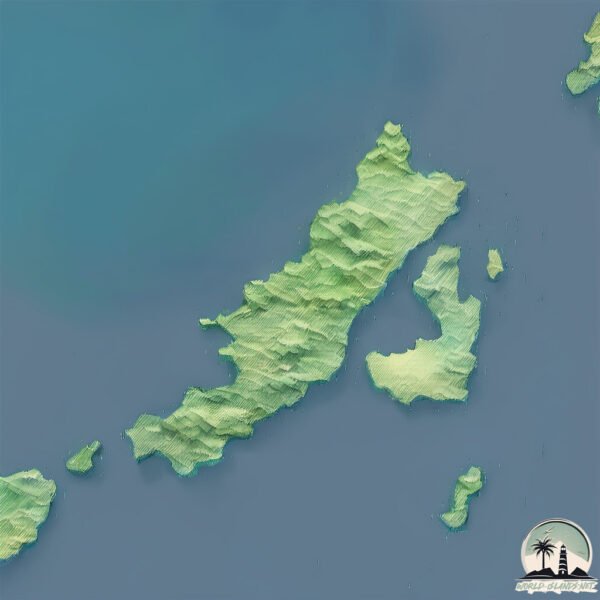Welcome to Nisí Alónnisos , a Temperate island in the Aegean Sea, part of the majestic Atlantic Ocean. This guide offers a comprehensive overview of what makes Nisí Alónnisos unique – from its geography and climate to its population, infrastructure, and beyond. Dive into the details:
Geography and size of Nisí Alónnisos
Size: 64.6 km²Coastline: 75.8 kmOcean: Atlantic OceanSea: Aegean SeaContinent: Europe
Nisí Alónnisos is a Medium Island spanning 65 km² with a coastline of 76 km.
Archipel: Sporades – A group of Greek islands in the northwest Aegean Sea, known for their lush vegetation, clear waters, and tranquil beaches.
Tectonic Plate: Aegean Sea – Located in the eastern Mediterranean, this microplate is characterized by seismic and volcanic activity due to its interaction with the Eurasian and African Plates.
The geographic heart of the island is pinpointed at these coordinates:
Climate and weather of Nisí Alónnisos
Climate Zone: TemperateClimate Details: Hot-Summer Mediterranean ClimateTemperature: Hot Summer
Climate Characteristics: Characterized by hot, dry summers and mild, wet winters, typical of coastal areas with abundant sunshine.
Topography and nature of Nisí Alónnisos
Timezone: UTC+02:00Timezone places: Europe/MariehamnMax. Elevation: 412 m Mean Elevation: 169 mVegetation: Evergreen Needleleaf ForestTree Coverage: 42%
The mean elevation is 169 m. The highest elevation on the island reaches approximately 412 meters above sea level. The island is characterized by Hills: Gently sloping landforms with rounded tops, having a maximum elevation between 200 and 500 meters. Hills contribute to a varied landscape on islands.
Dominating Vegetation: Evergreen Needleleaf Forest
Vegetation: 10 vegetation zones – Very Highly Diverse Island
Infrastructure and Travelling to Nisí Alónnisos
Does the island have a public airport? no .
Does the island have a major port? no .
The mean population of Nisí Alónnisos is 19 per km². Nisí Alónnisos is Gently Populated. The island belongs to Greece .
Continuing your journey, Nisí Peristéra is the next notable island, situated merely km away.
Error 403 The request cannot be completed because you have exceeded your
quota . : quotaExceeded
Greece is classified as Developed region: nonG7: Developed economies outside of the Group of Seven, characterized by high income and advanced economic structures. The level of income is High income: OECD.
News – Latest Updates and Headlines from Nisí Alónnisos
Stay informed with the most recent news and important headlines from Nisí Alónnisos. Here’s a roundup of the latest developments.
Loading...
Please note: The data used here has been primarily extracted from satellite readings. Deviations from exact values may occur, particularly regarding the height of elevations and population density. Land area and coastline measurements refer to average values at mean high tide.

